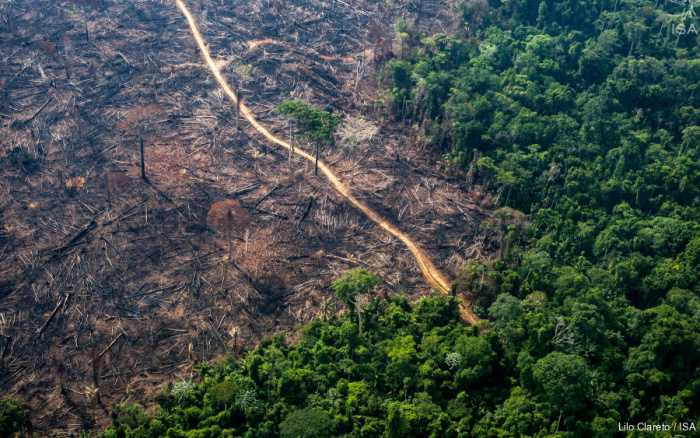Você está na versão anterior do website do ISA
Atenção
Essa é a versão antiga do site do ISA que ficou no ar até março de 2022. As informações institucionais aqui contidas podem estar desatualizadas. Acesse https://www.socioambiental.org para a versão atual.
Survey: General Environmental Licensing Bill will cause a surge in deforestation in Brazil
quarta-feira, 24 de Novembro de 2021 
Esta notícia está associada ao Programa:
Technical note reinforces that climate goals would not be met by Brazil if the bill is approved by the Senate
If the current wording of Bill (PL) No. 2,159/2021 is approved by the Brazilian Senate, it could make deforestation in the Amazon explode and do away with the Brazil’s commitments under the Paris Agreement, the international treaty on climate crisis.
This is the conclusion of a technical note issued by non-governmental organization Instituto Socioambiental (ISA) and by the Federal University of Minas Gerais (UFMG), which have analyzed the impacts of the bill on deforestation resulting from major construction works in the Amazon region.
In practice, PL 2,159 dispenses with most environmental licensing requirements in Brazil. If approved, most enterprises and economic activities would only need to complete a self-declaration process over the internet, without any type of prior analysis by environmental agencies, and the license would be issued automatically. Several of the controls and restrictions on the socio-environmental impacts of the works would simply cease to exist, including those whose goal is to prevent deforestation.
The bill's rapporteur, senator Kátia Abreu (PP-TO), informed the Folha de São Paulo newspaper that the proposal could be put to a vote before the full session of the Senate later this week, but noted that its final wording is still being debated. Abreu is one of the most important advocates of large landowners in the country.
Impacts on deforestation
According to the analysis conducted by ISA and UFMG, if a single project, the construction of the “Ferrogrão” railway, between the states of Mato Grosso and Pará is actually conducted without the environmental conditions provided for in current legislation, it will cause the destruction of 53,000 km2 of forest by 2030, an area the size of Croatia or twice the state of Massachusetts.
The paving of the BR-319 highway, between the Amazon states of Amazonas and Rondônia, could cause deforestation in the state of Amazonas to reach 9,400 km² per year by 2050 - more than eight times the average rate recorded between 2015 and 2020, which was 1.1 thousand km². The accrued deforestation in the state over 30 years could reach 170 thousand km², an area larger than that of England.
The highway would facilitate access to one of the most preserved and most biodiverse regions in the Amazon, which houses many endemic species that only occur locally, and would definitively fragment the largest tropical forest in the world, in its southwest-northwest axis. About 95% of deforestation and 85% of burning in the Amazon are concentrated within a distance of up to 5 km of roads, according to one of the surveys conducted by ISA and UFMG.
“With paving and without measures to control deforestation, accrued carbon emissions would also more than quadruple compared to the current, reaching 8 billion tons – equivalent to the emission of 22 years of deforestation in the Legal Amazon based on the 2019 rate,” shows the analysis.
“By making environmental licensing an exception and preventing the adoption of environmental conditions against the illegal removal of vegetation, the bill will result in an increase in deforestation in the Legal Amazon to levels that will prevent Brazil from meeting its commitments under the Paris Agreement" , reinforces the document.
According to the current language of PL 2,159, improvement and maintenance works involving “pre-existing infrastructure” projects, such as the paving of highways, would be exempted from licensing. Another 12 types of activities and undertakings, including those involving agriculture and livestock, would receive the same treatment.
ISA
Imagens:
Arquivos:


